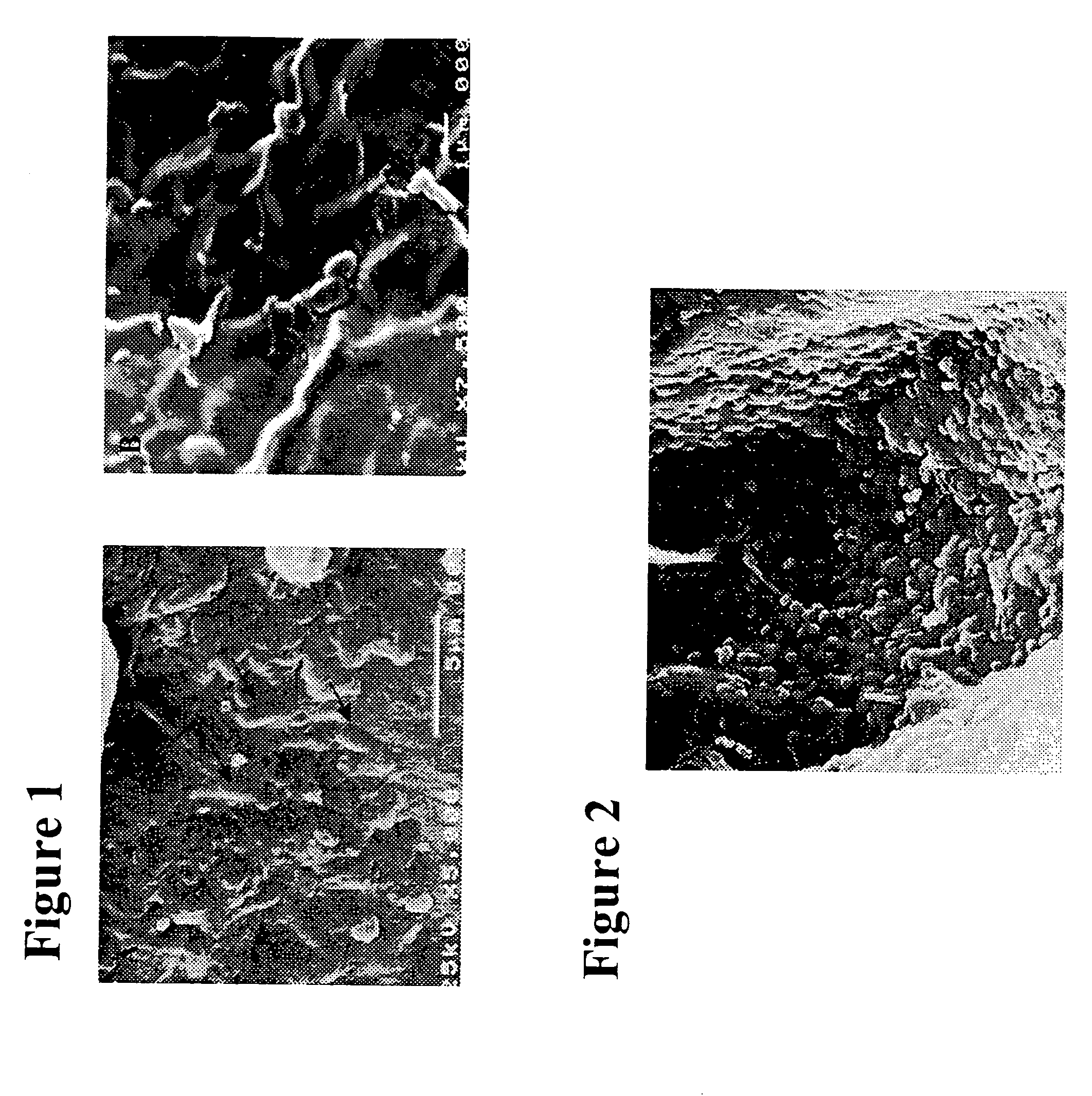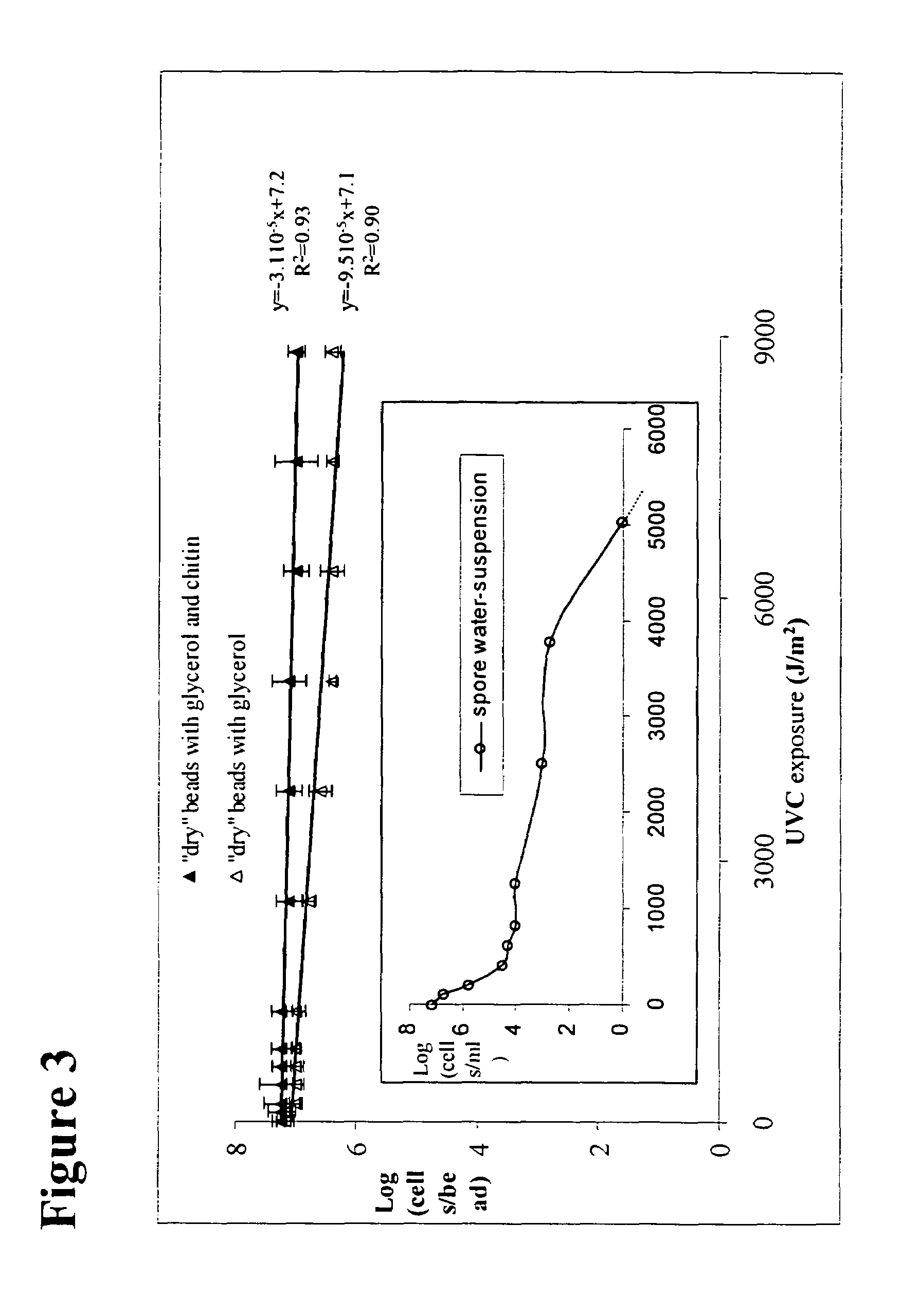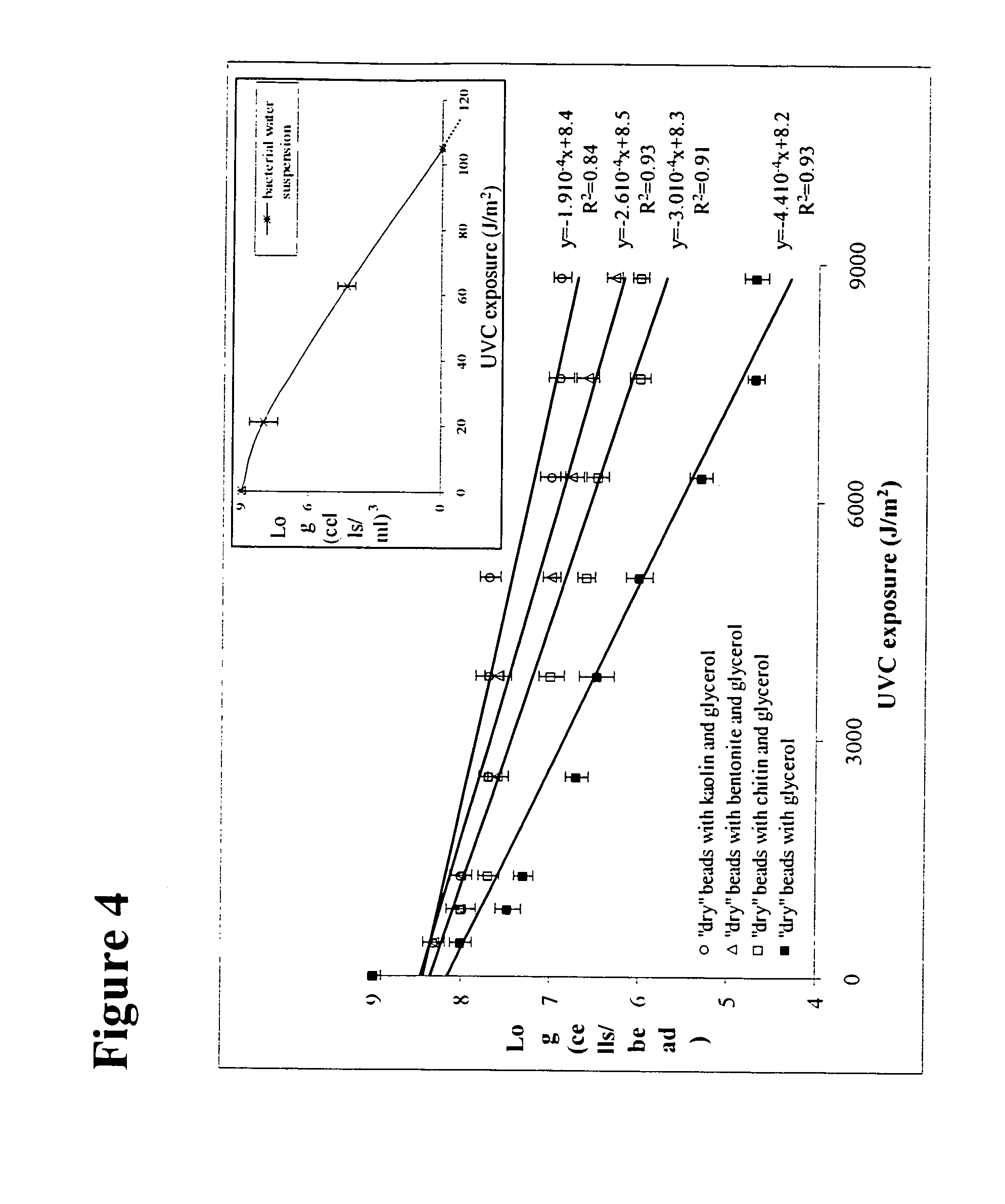Porous freeze-dried hydrocolloid beads containing viable microorganisms for biological control
a technology of hydrocolloid beads and viable microorganisms, which is applied in the field of freeze-dried hydrocolloid beads containing viable microorganisms for biological control, can solve the problems of limiting the effectiveness of biological control of microorganisms in agriculture, limiting the direct use of antibiotics derived from biocontrol agents, and none of these patents teaches the use of viable microorganisms, so as to reduce the development of resistant forms of pathogens and improve the effectiveness of plant pathogen
- Summary
- Abstract
- Description
- Claims
- Application Information
AI Technical Summary
Benefits of technology
Problems solved by technology
Method used
Image
Examples
example 1
Immobilization of Trichoderma harzianum T-203 and Pantoae agglomerans IC1270 in dried alginate beads afforded significant protection against UVC toxicity
Materials and Methods:
[0069]Culture medium and growth of microorganisms: For entrapment, the previously isolated bacterium Pantoae agglomerans strain IC1270 (10) and the fungus Trichoderma harzianum T-203 (11) were used as model microorganisms. The bacteria were grown in liquid (for the preparation of cell stocks) or on solid (2% w / v agar) nutrient broth (NB) and agar (NA), respectively. Cells were grown in NB for 24 h with aeration at 28° C. to a final concentration of 5×108 to 1×109 cells / ml. The fungus was grown on solid potato dextrose agar (PDA) for 7 days at 28° C. Spores were harvested by washing the medium surface with deionized sterile water, gently detaching them with a soft sterile brush and then filtering the suspension through multi-layered gauze in order to basically eliminate the mycelia in the suspension. Spores and ...
example 2
In Vitro Antifungal Activity Against the Plant Pathogenic Fungus R. solani Using P. agglomerans Entrapped in Dried Alginate Beads
Materials and Methods
[0092]Alginate-glycerol beads, with or without chitin, and before and after freeze-dehydration, entrapping P. agglomerans (107 cells / bead), were seeded at two corners of a PDA plate (9 cm) and incubated at 28° C. for 5 days. A 5-mm-diameter agar disk from the actively growing pathogenic fungal culture R. solani was then placed at the center of the PDA plate and the plates were incubated at 28° C. until mycelium growing on a control plate (containing beads without bacteria in the corners) covered the whole plate area. The extent of mycelial growth on plates containing beads was then estimated.
Results
[0093]As described, three different fillers (kaolin, bentonite and chitin) were used. Only one of them, chitin, had proven biological control activity (15). Therefore, the antifungal activity of the immobilized biocontrol agent P. agglomeran...
example 3
Antifungal activity of P. agglomerans and Serratia marcescens entrapped in Dried Alginate Beads in Greenhouse Conditions
Materials and Methods
[0095]Culture medium and bacterial growth: For entrapment, the chitinolytic biocontrol agents Serratia marcescens and Pantoae agglomerans IC1270 were used. The bacteria were grown on liquid or solid (2% w / v agar) Luria broth (LB) or agar (LA) at 30° C., for 24 h with aeration, to a final concentration of ˜109 cells / ml. Bacterial cells were separated by centrifugation at 4100×g in a refrigerated superspeed centrifuge (Universal 16R, Hettich, Gartenstrabe, Tuttlingen) for 15 min at 20° C. and suspended in sterile distilled water.
Preparation of the immobilization complex: Alginate (60-70 kDa, M:G 61:39, Sigma, LV, St. Louis, Mo.), was dissolved in distilled water (2% w / w). Glycerol (30% w / w, final concentration) was added to the alginate solution (2% w / w, final concentration). For the alginate-chitin bead preparation, a colloidal chitin suspension...
PUM
| Property | Measurement | Unit |
|---|---|---|
| diameters | aaaaa | aaaaa |
| temperatures | aaaaa | aaaaa |
| thickness | aaaaa | aaaaa |
Abstract
Description
Claims
Application Information
 Login to View More
Login to View More - R&D
- Intellectual Property
- Life Sciences
- Materials
- Tech Scout
- Unparalleled Data Quality
- Higher Quality Content
- 60% Fewer Hallucinations
Browse by: Latest US Patents, China's latest patents, Technical Efficacy Thesaurus, Application Domain, Technology Topic, Popular Technical Reports.
© 2025 PatSnap. All rights reserved.Legal|Privacy policy|Modern Slavery Act Transparency Statement|Sitemap|About US| Contact US: help@patsnap.com



